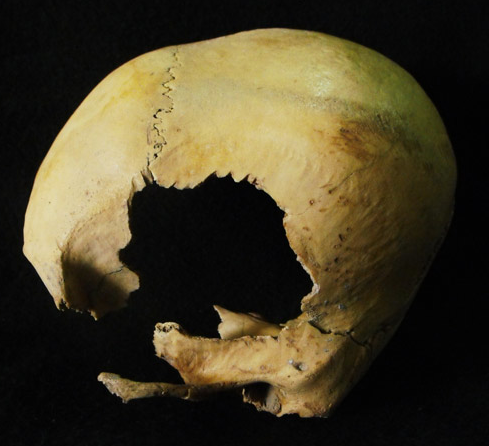
While excavating for a subway extension in Mexico City, archaeologists stumbled upon a little piece of history in the form of an Aztec offering. Excavators in Mexico discovered a wide array of remains that they believe to be ritualistic offerings, including two mens skulls, a dog's skull and a woman's skull. The one commonality between the skulls: they all have perforations around the temple. The finding is believed to date back to the time around the Spanish Conquestion (anywhere from 1350 to 1521).
According to Mexico's National Institute of Anthropology and History, many offerings were discovered from 2008 to 2012, and are part of a structure called a Tzompantli, which roughly translates to "skull banner." This structure is essentially a rack of skulls and the perforations on the skulls functions to hold the skulls up on the rack. While human skulls are no surprising discovery, it is the dog's skull that has left the archaeologists confused, as this form of ritual is typically used for victims of human sacrifice and the severed heads of warriors from rival groups. In fact, this marks the first discovery of a dog skull in a Tzompantli.
"We know that during the conquest some horse skulls were placed on this type of structure, but not dogs," said institute archaeologist Maria de Jesus Sanchez, reports PhysOrg. "Perhaps there are dogs associated with these altars in other sites and we don't know it." A theory that PhysOrg mentions is that the dog was sacrificed to accompany its owner into the afterlife. They write: "One possible explanation might have been dogs' ritual importance in death or burial rites. According to some pre-Hispanic beliefs, a dog accompanied his owner in the underworld."
© 2025 Latin Times. All rights reserved. Do not reproduce without permission.





